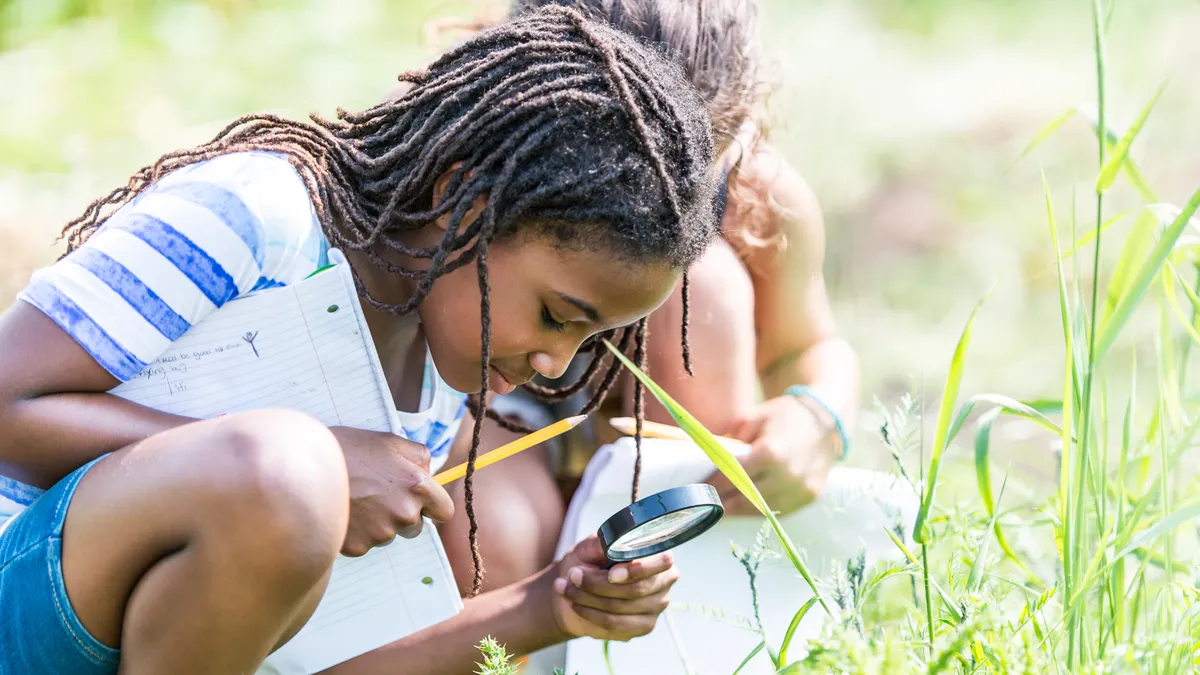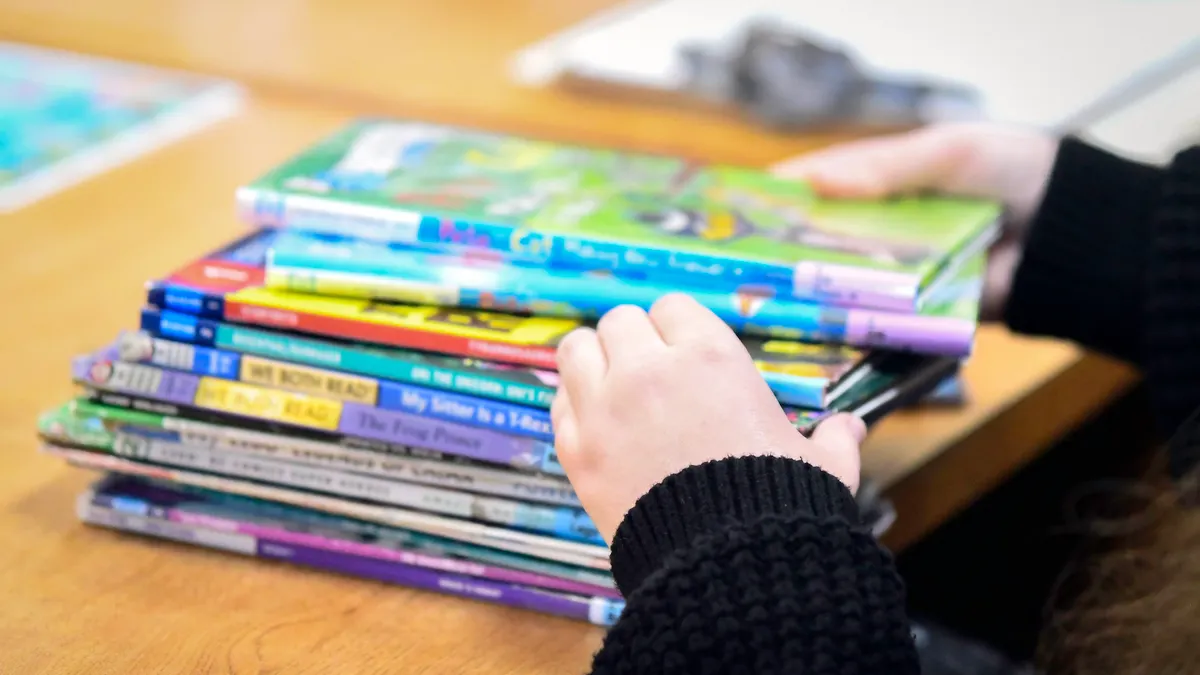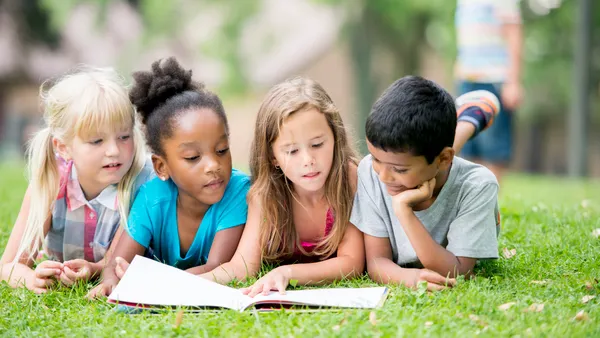In the years since most states have adopted the Common Core standards, reading achievement has declined among America’s 4th-graders, both in terms of the average score as well as in comparison to their peers in other countries, according to the results of the Progress in International Reading Literacy Study (PIRLS), the National Center for Education Statistics (NCES) announced today.
U.S. 4th-graders scored an average of 549, which is still close to a “high” score of 550 on the 0-1,000 scale, but is seven points lower than in 2011, the last time PIRLS results were released. The average U.S. score was behind 12 other countries, ahead of 30 countries, and about the same as 15.
“We see the same trend in the latest PIRLS results that we’ve been noticing for some time on other international assessments,” Peggy Carr, acting NCES commissioner, said in a press release. “Countries that were our peers have surpassed us while some that used to do worse than us are now our peers.”
About 16% of 4th-graders in the U.S. scored at or above the advanced level — at least 625— on the assessment, but that figure hasn’t changed much over time, Carr said, adding that “other countries seem to be doing a better job of moving students from lower levels of achievement to higher levels of achievement.”
The six education systems that saw improvements in both 2011 and 2016 are the Russian Federation, Hungary, Italy, Slovenia, Norway, and Quebec in Canada. Hungary, Bulgaria and Lithuania are examples of countries that had lower average scores than the U.S. in 2011, but are now on pace with the U.S.
PIRLS, which was first administered in 2001, is part of the International Association for the Evaluation of Educational Achievement (IEA) and NCES’s International Activities Program. Fifty-eight education systems participated in the 2016 PIRLS assessment, some of which were entities within countries, such as Moscow City, Madrid and Dubai.
PIRLS measures two areas of literacy skills. The first is the purpose of reading, which refers to “literary experience,” such as understanding plot, characters and themes, and reading to gather information. The second area measured is comprehension.
On each subscale, U.S. students’ scores ranged higher than the centerpoint of 500, from 543 to 557. But students in seven other education systems — the Russian Federation, Singapore, Ireland, Northern Ireland in Great Britain, Poland, Finland and Moscow City in Russia — scored higher on average in all of those areas.
With a greater emphasis on nonfiction and improving literacy skills in science and social studies, Common Core State Standards (CCSS) in English language arts (ELA) were designed to strengthen students’ skills in reading more complex texts so they can truly read to learn.
Efforts to align curriculum with Common Core still new
But Timothy Shanahan, a professor emeritus at the University of Illinois at Chicago and one of the authors of the standards, says even though the standards are in effect in 42 states, the ongoing controversy surrounding them has hampered efforts to make the changes in curriculum, assessment, teacher preparation and other areas of education needed to see a jump in reading performance at the national level.
“The CCSS standards are definitely rigorous and they were widely adopted,” he said. “And yet, I’d be hard pressed to say that I believed that schools have focused like a laser beam on accomplishing these standards.”
Teachers are reluctant, he said, to truly commit to a shift in instruction as long as public debates are ongoing, and he noted that because states are still making adjustments to their assessment programs, there hasn’t been enough time to respond to those results.
“We have yet to see any kind of concerted national or federal effort towards improving curriculum and instruction in ways that are aligned to these new standards,” he added. “There definitely have been moves towards this locally, but those are piecemeal and sporadic and given that, it will take a while before you will see any kind of national movement in performance due to them.”
Susan Pimentel, a lead writer of the CCSS for ELA and a founding partner at Student Achievement Partners, added that high-quality curriculum materials aligned to the standards are just now reaching the market and that teachers are still learning how to change their practices to help students meet the standards.
"Surveys show many students are still relegated to reading leveled texts rather than being provided with regular opportunities to read grade-level complex texts," she said. "Many programs treat reading like a general skill and focus exclusively on comprehension strategies, rather than attending to building students’ general knowledge about the world in the sciences, history, and the arts — this despite the fact that reading ability is highly associated with one’s knowledge. This is changing (and promising) but will take time to turn the tide."
In addition to the CCSS, there have been community-wide efforts to improve early literacy skills, such as the Campaign for Grade-Level Reading, which launched in 2010. More than 300 communities in 42 states are now participating in the effort, in which local organizations, such as libraries, parent organizations, business and government leaders, after-school and summer programs and other groups focus on improving the early reading performance of students in their community. Much of the campaign's efforts, however, focus on very young children and might not have had an impact on a 4th-grade assessment.
‘Hard to move the needle nationally’
The 4th-graders who took the PIRLS last year were still 3- and 4-year-olds when the 2011 results were released. Since that time, the percentage of young children enrolled in some type of “preprimary” program has remained relatively the stable, according to the NCES Condition of Education report, with just under 70% of 4-year-olds and less than 40% of 3-year-olds enrolled.
Among public, state-funded preschool programs, 2011 and 2012 were years of declining per-pupil spending and no overall enrollment growth, according to the National Institute for Early Education Research’s State Preschool Yearbook. While spending and enrollment began to increase again in 2014 and 2015, less than a third of 4-year-olds and only about 5% of 3-year-olds are enrolled in public preschool programs. The rest are in what is often referred to as a “patchwork” of private, nonprofit and home-based settings, or in no formal program at all. And for those who are enrolled in preschool, teaching practices vary so widely and are often not connected to the instruction students experience once they get to elementary school.
“It is very hard to move the needle nationally, given that the state and local experiences are so different,” Shanahan said. “It is kind of all over the map.”
Students demonstrate digital literacy skills
For the first time in 2016, the PIRLS program included assessments of students’ online reading ability, such as identifying a specific website, finding the most relevant information on the page, judging whether the information is credible and relating information across different sites.
On these measures, 4th graders in only Singapore, Norway and Ireland earned statistically significant higher average scores on ePIRLS than students in the U.S., who earned 557. Some 18% scored at or above the advanced level, and 56% scored at or above the high level.
“Our students seem to do a better job comprehending material and navigating content when they’re asked to do it online rather than on paper,” Carr said in the release.
This is an area where the CCSS might be having an influence on the classroom because of their emphasis on using "multiple types of media," suggests Lisa Guernsey, director of the Learning Technologies project at New America and a co-author of "Tap, Click, Read," which focuses on how digital tools can improve early literacy skills. She added that part of the reason U.S. students performed well on the first ePIRLS could be that many have grown up reading on devices, but that it would also be interesting to learn about the culture of tablet use in early childhood and the early grades in countries that did not perform as well.
The Future Ready Schools initiative, the International Society for Technology in Education standards and other projects aimed at preparing students to succeed in an information economy have also guided schools in boosting students’ digital and media literacy skills, In fact, news and media literacy was named Education Dive K-12’s Obsession of the Year on Monday because of the growing attention to these areas at state and local levels since the 2016 election.
Guernsey also added, however, that students' ability to find information online might not mean they are developing the reading skills needed for comprehending and analyzing more complex text — in whatever form it takes. If students' digital reading skills are "not connected to really understanding the content, then we still have a huge mountain to climb," she said.
Differences by subgroups were also reported for both the PIRLS and the ePIRLS. With both conventional and online texts, girls scored higher than boys. On both assessments, white and Asian students scored higher than black and Hispanic students. Also on both assessments, those attending schools in which 10% to 24.9% of students qualify for free- or reduced-price lunch scored slightly higher than those attending the lowest-poverty schools.






 Dive Awards
Dive Awards













